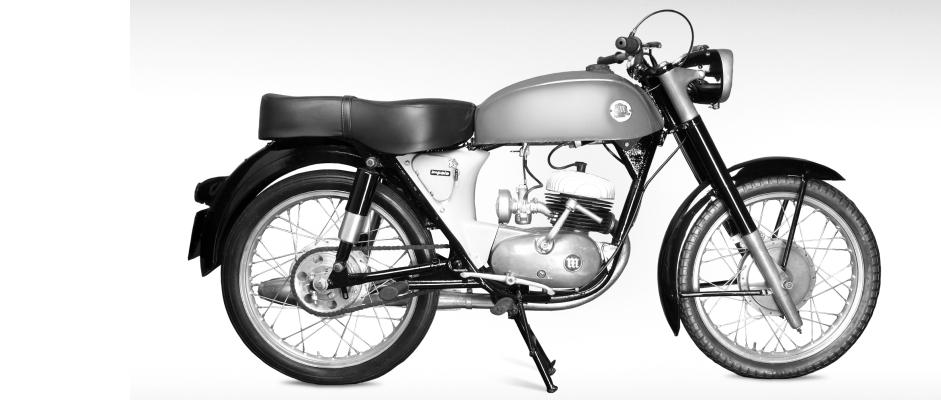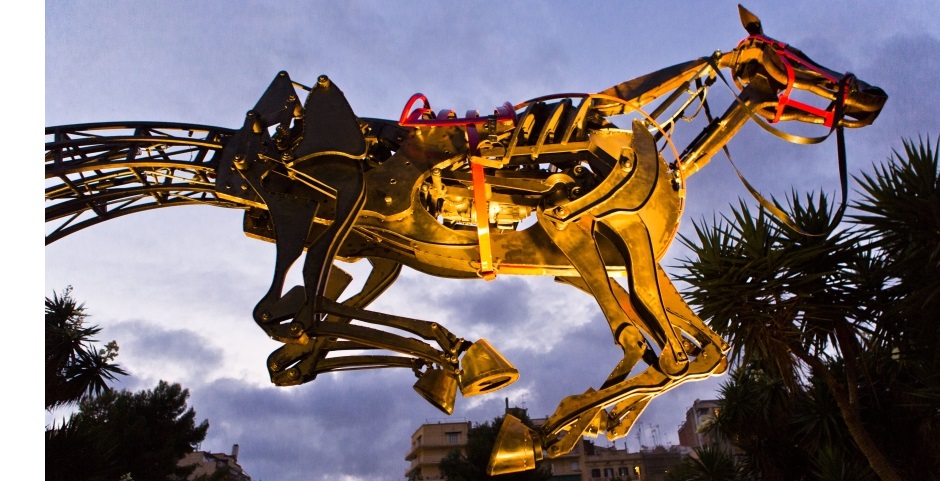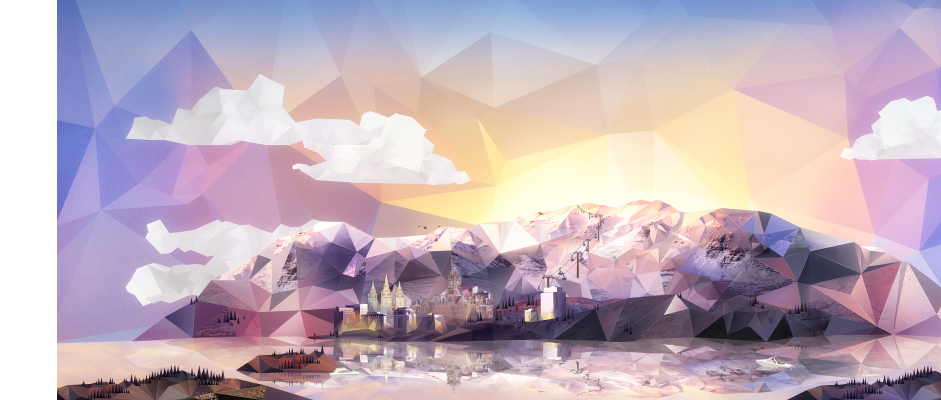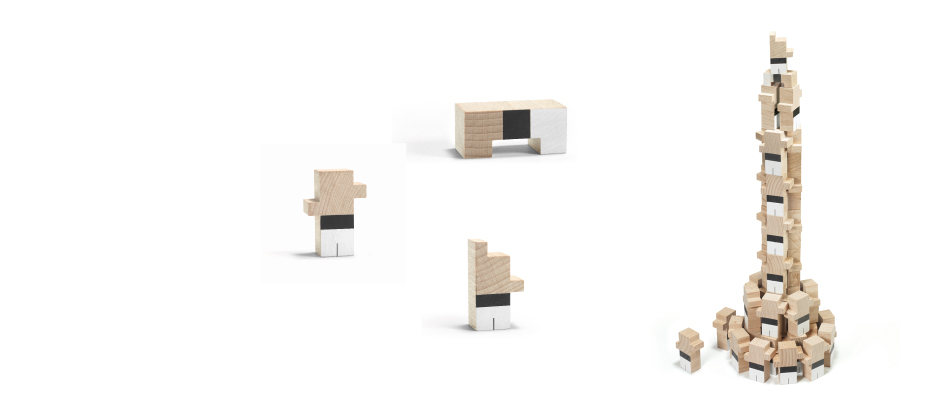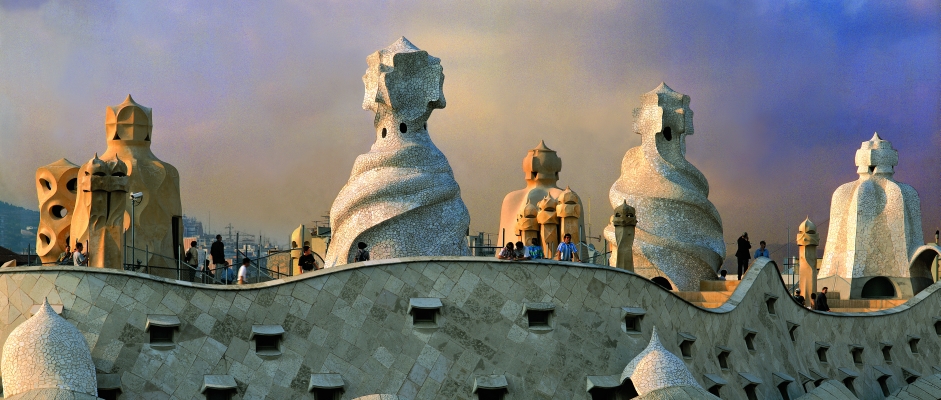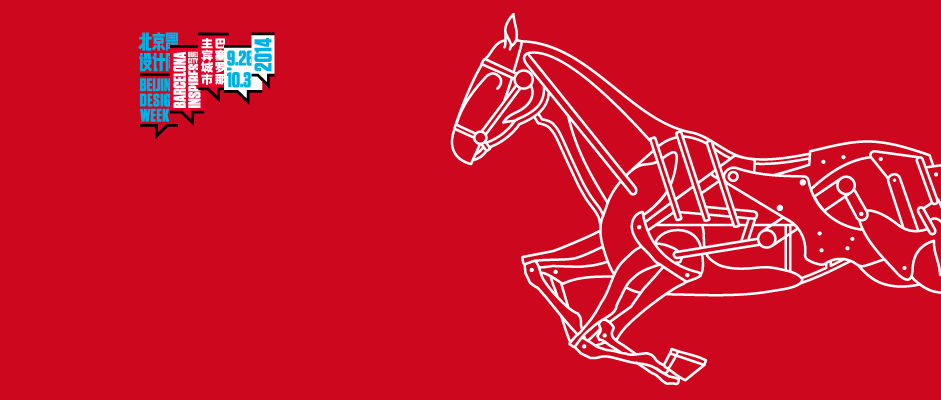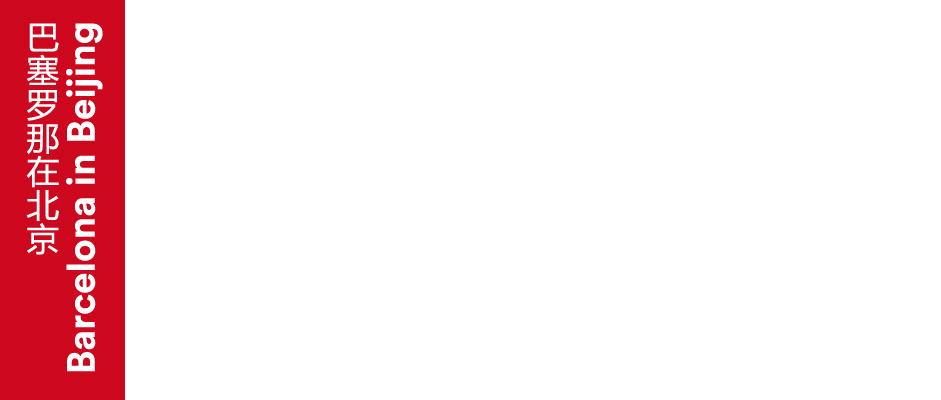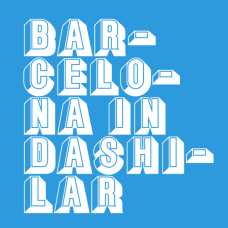BARCELONA AT DASHILAR ALLEY
EVERY CITY IS AN ECOSYSTEM
Just like a living organism, the health of a city depends on how its citizens use and share their living space. The more open and free public space is, the healthier and more active the city will be.
Barcelona has been always a very open-minded and forward-thinking city.. As a port city it has always been welcoming to different communities and cultures. Beijing and Barcelona have a lot of similarities in their urban evolution over the 20th century. Both were historically compressed within their city walls and then have experienced expansion over the last 150 years.
If there is one thing that defines the success of Barcelona as an international model for urban development worldwide, it is the fact that all our urban planning is done with the idea of expanding public space without defining it, something like an open-source platform. That is the basis for any successful city of the 21st century.
THE QUESTION IS
Is it possible to mix, share, expand and exchange the way a city approaches and creates space for its citizens? Or said another way, can we impact the way our city attracts and fosters design and designers, art and artists, ideas and actionsThat is the basic aim of Barcelona’s participation as a guest city in Dashilar. What we are after is a dialogue and exchange in urban creativity, rather than just a presentation, one that expands the DNA of the guest city outside of the main pavilion.
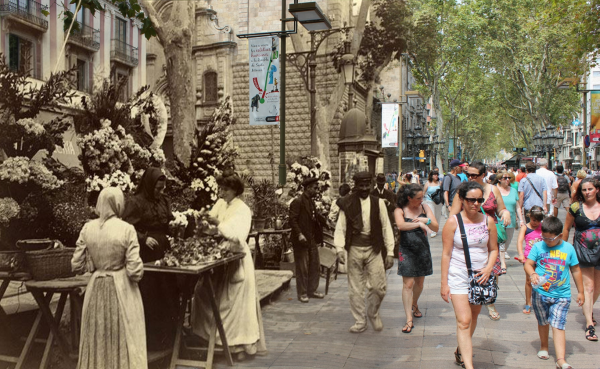
There are three sections for the Dashilar program:
Allioli (interventions into the neighborhood)
Projects are chosen based on the opportunities they offer for long-term collaboration and use and creation of public space. These are projects that involve the community and are not just exhibitions. While each project is unique in its aims, all of them have in common an interdisciplinary point of view on design. That means they explore the frontiers between design and other disciplines, with a focus on how design tools and dynamics can be used to open new borders for creativity.
Casa de Barcelona (House of Barcelona)
[the guest city DNA & alternative pavilion]. Located in a single building, it is divided into several environments, each directly related to the city of Barcelona rather than to a specific artist. There are different types of displays, mostly based on graphic elements, meant to create spaces in which Beijingers can approach the city and its personality.
Meet the twin (Post-Digital design in Barcelona and Beijing)
This part of the project focuses directly on designers. It consists in encounters and exchanges between 5 pairs of studios (each one a studio from Barcelona and a studio from Beijing) that share the same methods and style in their work. It is a collective design show but at the same time it is a space to generate debates, discussions, and to establish a first contact for further connections between designers from the two cities. Each twin hosts a workshop and exhibition. This is a project by Offf, Let's Feed the Future
All interventions in Dashilar are classified under one of three labels.
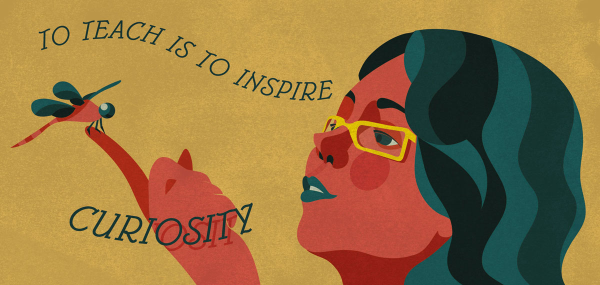
Made in BCN
These are projects related to memory, legacy and our heritage, both historical and contemporary. They are examples of all that made the city what it is.
BCN in progress
These are projects that aim to represent a significant, even if incomplete, panorama on what is happening today in the city. We aim to show the diversity, excitement and contradictions within the city.
Cooking the future
Barcelona is a laboratory where new ideas are being generated constantly, and they predict a future full of creativity beyond clichés for tourism. We especially focus here on those working with digital technologies and changes in urban environments.
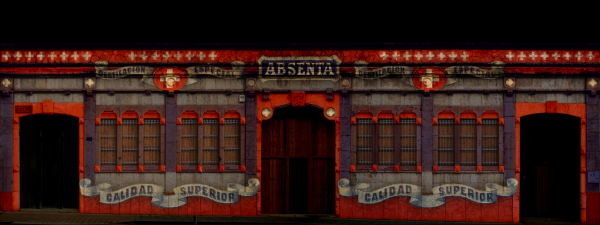
MAPPING
It is a project where Beijing and Barcelona interact with each other. It is a confluence, dialogue and exchange of culture, urban identity, cultural backgrounds, and folklore. It is a presentation of Barcelona but at the same time a presentation of Beijing. It is a space for diversity and confluence, for understanding and tolerance, and to create a visual bridge between the two cities. We present it as an approach to two different urban realities and their citizens. It is based on real elements from both cities and streets, so the main elements are parts and fragments from them, not abstract elements. It condenses the most representative points and spots of both places, all with an intense creative touch.
Highlight: Mapping is a daily visual display, an artistic and cultural attraction to the area of Dashilar.
Audio and video content are made-up of images and sounds from both Barcelona and Beijing. It is designed to be a kind of visual symphony on a specific architecture that serves as a link between the two cities.
URBAN FARMING
This is a siheyuan that has been transformed into an eco-building for urban farming. At the same time it contains a small exhibition by Re:Farm the City which addresses eco-design, ecology values, and domestic and urban strategies for recycling During BJDW the space will host different workshops daily which will be open to the public on subjects like learning how to construct different gadgets for humidity control, compost, water cycles, and seeding. We invite you to come and have a drink on our eco-bar with aromatic herbs.
Highlight: The building up of an orchard open to the community and which will belong to the international network of orchards Re:Farm the City.
There will be multiple workshops for the creation and application of hardware design and recycling, to be used to create the various elements of the orchard, including the implementation of composting elements.
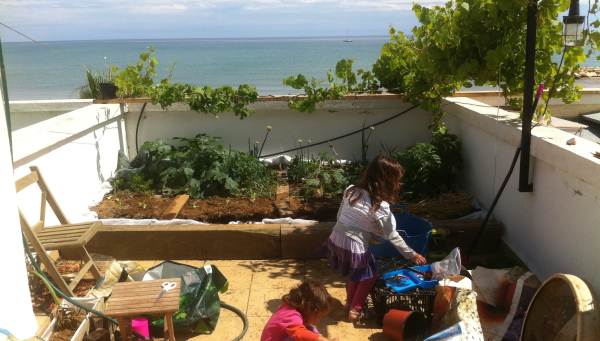
MAP OF CULINARY PROCESS
This is a graphic installation representing the long-term collaborative project between Adrià and Bestiario. Map of Culinary Process is the new project commissioned by master chef Ferran Adrià to visualize everything involved on the act of cooking. The collaboration between them resulted in an exhibition at the The Drawing Center in New York in January 2014, and El País pavilion at Arco Art Fair (Madrid).
It consists of single space where cooking and creativity walk side by side, from anthropologic basis to deconstruction of food. An evolving experience to get inside a shared creative process. A sensual display in graphic language.
OBJECTUAL MAGAZINES
Many of the most experimental or interesting designs are not made by designers nor published in mainstream media. Objectual magazines can be seen as the most evident point where art and design come together into a single work. As collective expressions these magazines are the best tool to understand a city's culture and its creativity, specially the most radical and avantgard.
Barcelona is a city that has been the birthplace of multiple objectual magazines. Long before Picabia published the first "391" in 1917, the magazine as artwork was already common. Like mobile galleries or museums, a long list of avant-garde artists and publishers had been involved in them, locally and worldwide.
Many magazines had been for a long time the key meeting point for experimental artists, theorists and linguists. From Dadaism to other movements, these magazines have been always a natural way to create synergies and collaborations, collective projects open to any form and format.
OUTDOOR CINEMA
One common activity for summer is the cinema under the stars. Almost every Town Fair has its night for outdoor cinema. With a different program each night highlighting Barcelona film directors, artists and platforms with a design-related approach to cinema, we will present a variety of films and understanding of moving images. Film selection to present the different layers and sediments that define Barcelona and build its personality and that of the creative professionals who live there. They serve as a plural showroom, a visualization of the different filmic processes that occurr in the city.
BROSSA
To present Barcelona as a highly creative place for design without the presence of Joan Brossa's visual poetry would be like making a ham sandwich without the mayonnaise. There are many designers who will say that they have been influenced by their explorations of the work of this poet. It makes sense to place graphic design as an invention derived from visual poetry, in its most contemporary sense. The hybrid field between poetry and design has been around since before Concrete Poetry. From Dadaism to Futurism, designers and poets were often one in the same. Work with signs does not distinguish between text, image or type.
This exhibition will include a selection of reproductions of Joan Brossa's visual poems, which offer an astonishing and refreshing point of view on how to use design to make something new, covering the streets of Dashilar. This poet is perhaps one of the most important Catalan writers in the 20th century.
Together with Nicanor Parra and Marcel Broodthaers he brought poetry into new territory.
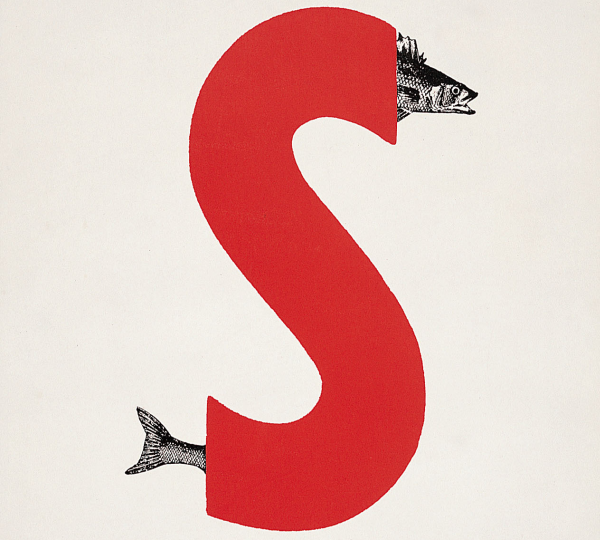
B&BABEL
This is an augmented reality project that combines design and art. The first steps in designing a city were dedicated to label the streets. Cities are like a big jumble of different things where every single element has a label: everything has its own name. Partly, the order and organization of the city is set by those business and street signs that guide us on our urban journeys. Design visualizes what language names.B&Babel dispenses with written language and instead uses visual language, a language whose basic vocabulary is colour. At the same time, places generate their own language, they name things after their particular histories and cultures. Thus, the designs of camouflages blend in with the characteristics of the place. This is the element chosen to identify place and language in connection with colour: each culture has a different sense or symbolism in connection with colour, so every culture has a particular geography that 'names' it; every culture has its language and every culture organizes itself around their basic needs: trade, exchange, communication.
In a globalized world, the identity of a language tends to disappear, to camouflage itself behind a uniformed culture without geography or place. B&Babel wants to make us think about this idea from the thesis of 'designs without names', 'naming' with the designs of those virtual signs and their colours. There will be 10 spots in Dashilar quarter in Beijing and "Poble Sec" quarter in Barcelona where the virual installations will be shown.
POPULAR DESIGN AND AUTHOR DESIGN
This is a exhibition seeks to establish a dialogue between traditional Catalan designs and contemporary designs by presenting some of the same kind of objects from each. Some of the traditional designs are quite impossible to improve upon. Striking a perfect balance utility and beauty, these elements are clearly linked to their cultural landscape. To take on designs that has been working forever as iconographic symbols and reshape them or transmute them in substance is a way to open and renew heritage without denying it, and it is a path to creating new ways to interact with the environment, as well.
B FROM BARCELONA
Over the years the Council of Barcelona developed many logos and public campaigns, involving some of the best designers in town. By presenting the materials that have been created along the way it is possible to trace their development and the strategy to the present with the city as a frame. There are 2 interpretations to be found, the first a narrative on visual changes and concepts that has evolved with the city, and the second an intra-historic explanation of design in Barcelona and its principal agents.
BCN SUPERMARKET
Basic products elaborated and designed in the city that have become iconic for the city and its local imagery. Some of these products are especially well known in China.
CATALAN REPUBLIC POSTERS
During the Catalan Republic and the Spanish Civil War the best illustrators and artists worked for the Catalan cause, against the Fascists. The visual language they created established the basis for modern concepts of graphic design and created a complete language for propaganda and advertising worldwide.
PRESENT CONTINUOUS
This exhibition consists of photographic work where past and present images from the same spot in the city are mixed together to reflecting the evolution of the city. This work has been exhibited previously by the Barcelona City Council Photo Space, and it was created by Josep Maria Martínez Tamborero.
Artist: Josep Maria Martínez Tamborero.
BCN LIBRARY
This is a collection of books published by the Barcelona City Council on topics ranging from urbanism and architecture to design. It's a huge library that offers all kinds of knowledge about the Guest City
FAD LIBRARY
Collection of books published by FAD, a private, independent and not-for-profit association that has the objective of promoting design and architecture as part of the country's cultural and economic life.
Founded in the year 1903, the FAD has become the first point of reference for design and architecture in Catalonia and Spain, thanks to its commitment to the ongoing task of promoting creative culture through exhibitions, professional talks, prizes and events.
The FAD boasts over 1500 associated professionals, who receive abundant information on current affairs in disciplines related to design and architecture. In a voluntary manner, the members can form part of the boards of directors of the different associations with the purpose of organising all types of activities that raise society's awareness of the functions of good desig LOCUS BCN. L'OUCOMBALLA.
L'oucomballa is a traditional event performed each year by Corpus. It is especially well-known for taking place at Barcelona's Cathedral Cloister. It consists in an egg dancing on the top of a fountain water jet, quite a magic trick.
LOCUS BCN. CAGANERS
A classic figure for the traditional nativity scenes that in many homes in Barcelona, instead of a Christmas tree. Along side small ceramic figures rrepresenting Baby Jesus, Joseph, Mary and the Wise men, the classic caganer represents the traditional peasant man and woman, in folkloric dress and hats, answering nature's call (yes, defecating). In modern times a huge variety of figures appear every year, representing celebrities from politics, football, and and show business. It's a great example of Catalan humor and life understanding.
LOCUS BCN. BCN POSTCARD
An LP compilation of different songs from everywhere that feature Barcelona as a main theme. This LP was created as artwork by Miralda and Sisa. It contains live recordings from Barcelona in the 80's. It is a collection object and rare edition, created during the birth of contemporary art and freedom after Franco's dictatorship.
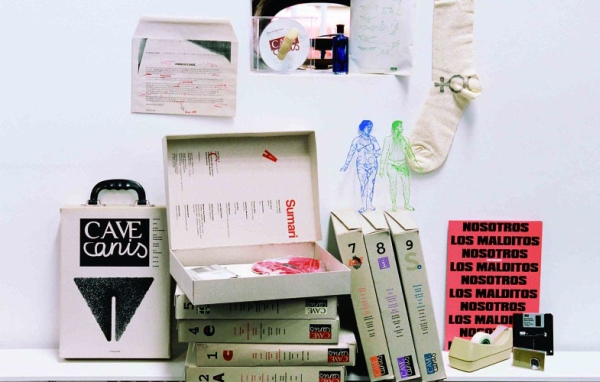
LOCUS BCN. BEACH
The sea and the beach, now a key element in Barcelona's urban landscape, was for many years a totally ignored part of the landscape of Barcelona. It was in preparation for the 1992 Olympic Games that the city 're-discovered' the beach as an essential part of itself. It is the Mediterranean sea that is perhaps what anyone who lives along its shores misses the most when away from home.
BCN PAVEMENT
When walking around Barcelona one thing not to be missed is the very sidewalk under your feet. The urban landscape is codified and arranged, organized, ready to be used. A collection of beautiful cement tiles paves the sidewalks in elegance and style.
TOURRORISM
What is the point of view of a tourist about the city? What are the spots that every tourist visits in Barcelona? Is there any specific mood for visiting the city? How does globalization and the mass tourism that comes with it impact the city? And where is the frontier between art or design and simple homemade youtube videos? Is technology a tool to bring creativity to anyone?
URBAN ACTION
Architects, designers, artists and activists have plenty of groups that work to constantly to refine or redefine Barcelona. Many of these groups are completely independent and run on alternative ways of work and living. This will be a show on various urban architecture and urban activist groups based and their collective mechanisms on constructing public space.
BCN CREATION MAKERS
There is a total of 9 Art Factories in the city. This exhibition will showcase an original project from each one of them, and based on each Factory team's own selection.
The Art Factories programme is based on transforming disused spaces into new powerhouses of culture and knowledge. The goal is to put creativity, knowledge and innovation at the heart of the city's policies.
Launched by Barcelona City Council's Culture Institute, the project meets a longstanding demand by creators and collectives for spaces equipped for artistic creation and research.
The Art Factories are therefore ideal spaces for cultural innovation and production. The end goal is to see culture as one of the city's strategic assets as it develops itself economically, socially and as an urban space, as well as boosting its inhabitants' creativity. Creativity here should be understood in its broadest possible sense, embracing artistic skills, intellectual exchange, critical thought, scientific and social research, and leisure.
In addition, the Art Factories also aims to offer young creators the opportunity to take their first steps towards honing the skills they will need on their on the path towards professionalization.
Barcelona Art Factories is an integrated programme that works by fostering collaboration and forging ties – a new model of management that eschews the usual trend of government administrations to create uniform, standard management networks. It works directly with the different groups that run the facilities, who are the ones that really shape and structure the project and make it grow.
MEET THE TWIN, Post-digital design in Barcelona and Beijing
Meet the Twin is a collaborative project between design studios, one from Barcelona and one from Beijing, where similar attitudes and works are explored by finding pairs of studios that share similar process and aesthetics. The aim is to create the basis for long term relationship between both cities' designers.
It is a collective design show and at the same time a space to generate debates, discussions, and joint projects, and to establish a first contact for further connections between designers. Different workshops will take place on the main exhibition space, and an event with a panel of presentations from all participants is to be held at UCCA on September 30th from 13 to 17h. This project is curated by Offf Let's Feed The Future.




